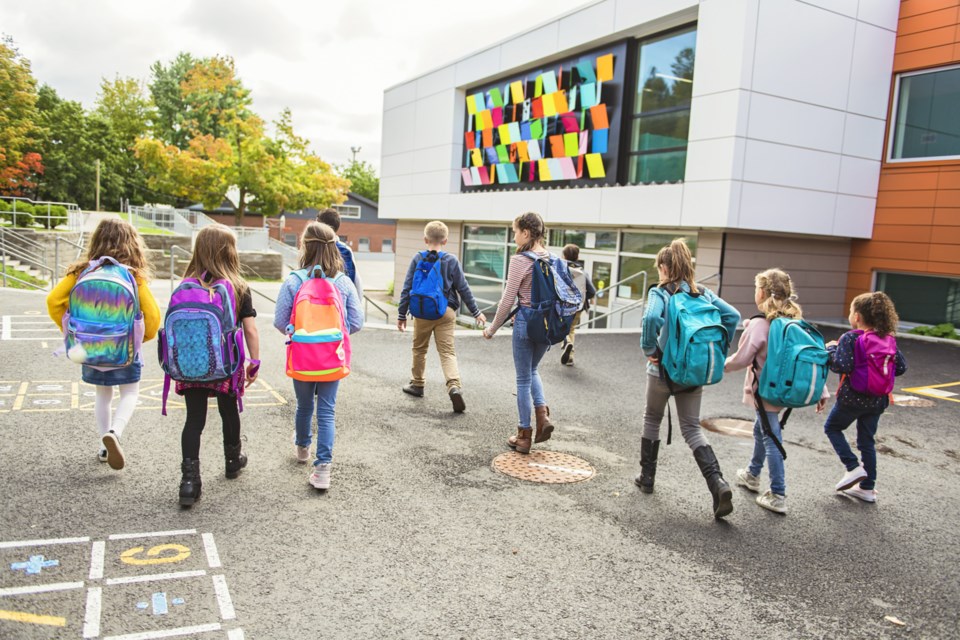Right now we’re all Butch Cassidy and The Sundance Kid, staring over the edge of the cliff wondering if we’re going to drown – but it’s the fall that’s gonna kill us.
For millions of parents, their number one concern is what will happen with school this fall.
Add in the fact that bank mortgage deferments will soon end, and homeowners will have to start to pay again plus the accrued interest, and the fall is truly shaping up to be a nightmare.
It is no easy question whether school can safely operate this fall – but the consensus is that it must.
Kids cannot regress or fall indefinitely behind with half a year of instruction lost. Mums are facing a disproportionate child-care burden; we cannot allow decades of women advancing in the workplace to be undone by a pandemic. And employers need employees who are not stressed juggling Zoom conference calls with managing snack time or explaining fractions.
But how can school operate safely? We see Asian countries with little kids in masks being scanned for fevers every morning, but warning signs out of the United Kingdom, when they started to reopen schools only to see cases spike.
Kids are less likely, it seems, to get seriously ill from COVID-19, but if we’ve learnt anything about asymptomatic spread, it’s that they could still be vectors, bringing the virus home to parents and grandparents, exposing teachers and other educational workers as well.
Premier Doug Ford has said that his government is preparing for three scenarios: a return to school as safely as possible, a combination of in-person and online instruction, or the continuance of online-only education. The government has already added $750 million to the education budget this year.
When I served as a student trustee on the Simcoe County District School Board, I was obsessed with renovating and retrofitting our schools; COVID-19 has exposed so many fault lines in our society, and the fact our schools were overcrowded and in ageing buildings with poor ventilation -- particularly in portables -- before the pandemic is one of those challenges.
The province has said in-person class should not exceed 15 people to maintain physical distancing.
So it’s time to get creative.
New Ontario Liberal leader Steven Del Duca released a few ideas this week, including proposing commandeering other civic spaces such as libraries and community centres as makeshift classrooms, and promoting Bachelor of Education students into action, to lower class sizes.
There are other ideas that should be considered as well, and room for experimentation by school boards across the province.
For instance, school could run in “shifts”, say from 8am until 1pm and again from 2pm to 8pm, perhaps allowing a later start time for older students (something research suggests might be a good thing for teenage brains).
Thorny issues such as buses – which in a COVID-19 world look like literal sardine cans – will require careful consideration; no doubt there will be campaigns to encourage walking or biking to school. As well, older teachers, and pupils and teachers who are immunocompromised or have someone in their family who is will require special consideration and support.
Children with special needs are particularly vulnerable. There are alarming reports of children with exceptionalities regressing from not having the chance to socialize. We already did not have nearly enough educational assistants to care for our most vulnerable students, and now too many children may be less capable of communicating or of handling social interactions than they were in the wintertime.
So more than just looking at community centres for space to add in more classrooms, we should also try to enlist municipal recreation staff, early-childhood educators or other professionals with experience working with kids to help supplement the work of teachers and support staff; now is not the time for unions to get territorial about who can lend a hand to make schools function.
Finally, at least until the snow flies, there is also room for positive ways to address the dilemma: school administrators should be mandating outdoor classes where possible, particularly for gym class, since it seems the virus is less spreadable outside. That requires prioritizing maintenance on school fields in August to ensure they are ready for use in the fall.
There is no silver bullet to reopen our education and child-care systems, and running a school is far more complicated than running a bar patio. But we must get this right; we have to get creative; we have to find a way to make it work as best and as safely as possible.
After all, Butch and Sundance survived that fall.



